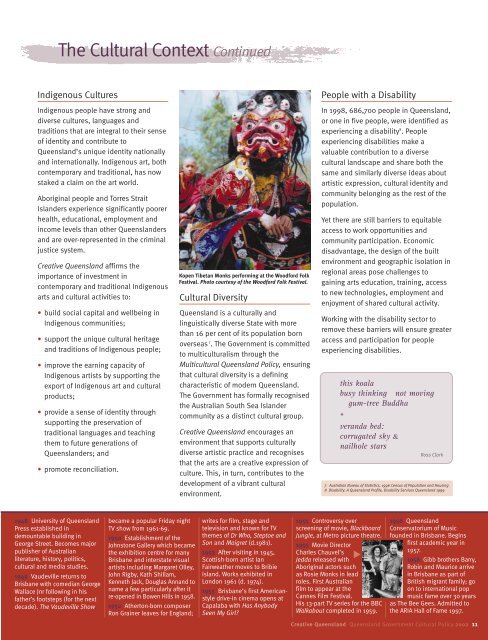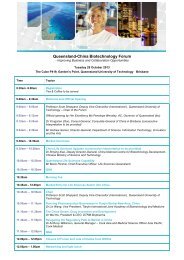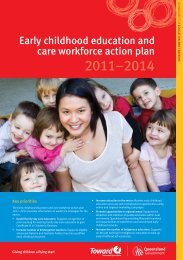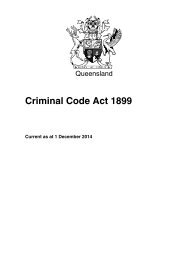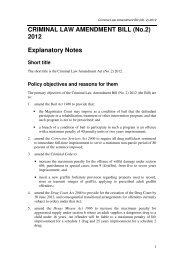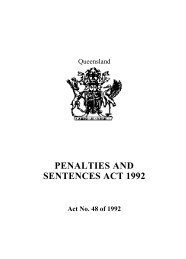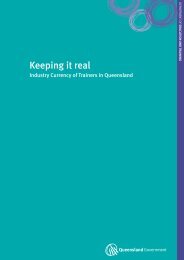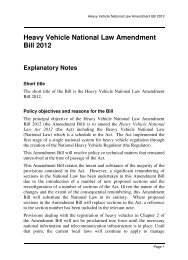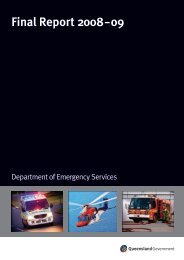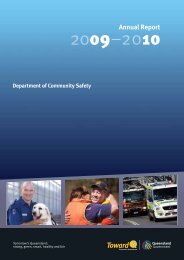AQ034 Cultural Policy.qxd - Arts Queensland
AQ034 Cultural Policy.qxd - Arts Queensland
AQ034 Cultural Policy.qxd - Arts Queensland
- No tags were found...
You also want an ePaper? Increase the reach of your titles
YUMPU automatically turns print PDFs into web optimized ePapers that Google loves.
The <strong>Cultural</strong> Context Continued<br />
Indigenous Cultures<br />
Indigenous people have strong and<br />
diverse cultures, languages and<br />
traditions that are integral to their sense<br />
of identity and contribute to<br />
<strong>Queensland</strong>’s unique identity nationally<br />
and internationally. Indigenous art, both<br />
contemporary and traditional, has now<br />
staked a claim on the art world.<br />
Aboriginal people and Torres Strait<br />
Islanders experience significantly poorer<br />
health, educational, employment and<br />
income levels than other <strong>Queensland</strong>ers<br />
and are over-represented in the criminal<br />
justice system.<br />
Creative <strong>Queensland</strong> affirms the<br />
importance of investment in<br />
contemporary and traditional Indigenous<br />
arts and cultural activities to:<br />
• build social capital and wellbeing in<br />
Indigenous communities;<br />
• support the unique cultural heritage<br />
and traditions of Indigenous people;<br />
• improve the earning capacity of<br />
Indigenous artists by supporting the<br />
export of Indigenous art and cultural<br />
products;<br />
• provide a sense of identity through<br />
supporting the preservation of<br />
traditional languages and teaching<br />
them to future generations of<br />
<strong>Queensland</strong>ers; and<br />
• promote reconciliation.<br />
Kopen Tibetan Monks performing at the Woodford Folk<br />
Festival. Photo courtesy of the Woodford Folk Festival.<br />
<strong>Cultural</strong> Diversity<br />
<strong>Queensland</strong> is a culturally and<br />
linguistically diverse State with more<br />
than 16 per cent of its population born<br />
overseas 7 . The Government is committed<br />
to multiculturalism through the<br />
Multicultural <strong>Queensland</strong> <strong>Policy</strong>, ensuring<br />
that cultural diversity is a defining<br />
characteristic of modern <strong>Queensland</strong>.<br />
The Government has formally recognised<br />
the Australian South Sea Islander<br />
community as a distinct cultural group.<br />
Creative <strong>Queensland</strong> encourages an<br />
environment that supports culturally<br />
diverse artistic practice and recognises<br />
that the arts are a creative expression of<br />
culture. This, in turn, contributes to the<br />
development of a vibrant cultural<br />
environment.<br />
People with a Disability<br />
In 1998, 686,700 people in <strong>Queensland</strong>,<br />
or one in five people, were identified as<br />
experiencing a disability 8 . People<br />
experiencing disabilities make a<br />
valuable contribution to a diverse<br />
cultural landscape and share both the<br />
same and similarly diverse ideas about<br />
artistic expression, cultural identity and<br />
community belonging as the rest of the<br />
population.<br />
Yet there are still barriers to equitable<br />
access to work opportunities and<br />
community participation. Economic<br />
disadvantage, the design of the built<br />
environment and geographic isolation in<br />
regional areas pose challenges to<br />
gaining arts education, training, access<br />
to new technologies, employment and<br />
enjoyment of shared cultural activity.<br />
Working with the disability sector to<br />
remove these barriers will ensure greater<br />
access and participation for people<br />
experiencing disabilities.<br />
this koala<br />
busy thinking not moving<br />
gum-tree Buddha<br />
*<br />
veranda bed:<br />
corrugated sky &<br />
nailhole stars<br />
Ross Clark<br />
7 Australian Bureau of Statistics, 1996 Census of Population and Housing<br />
8 Disability: A <strong>Queensland</strong> Profile, Disability Services <strong>Queensland</strong> 1999<br />
1948 University of <strong>Queensland</strong><br />
Press established in<br />
demountable building in<br />
George Street. Becomes major<br />
publisher of Australian<br />
literature, history, politics,<br />
cultural and media studies.<br />
1949 Vaudeville returns to<br />
Brisbane with comedian George<br />
Wallace Jnr following in his<br />
father’s footsteps (for the next<br />
decade). The Vaudeville Show<br />
became a popular Friday night<br />
TV show from 1961-69.<br />
1950 Establishment of the<br />
Johnstone Gallery which became<br />
the exhibition centre for many<br />
Brisbane and interstate visual<br />
artists including Margaret Olley,<br />
John Rigby, Kath Shillam,<br />
Kenneth Jack, Douglas Annand to<br />
name a few particularly after it<br />
re-opened in Bowen Hills in 1958.<br />
1952 Atherton-born composer<br />
Ron Grainer leaves for England;<br />
writes for film, stage and<br />
television and known for TV<br />
themes of Dr Who, Steptoe and<br />
Son and Maigret (d.1981).<br />
1953 After visiting in 1945,<br />
Scottish-born artist Ian<br />
Fairweather moves to Bribie<br />
Island. Works exhibited in<br />
London 1961 (d. 1974).<br />
1955 Brisbane’s first Americanstyle<br />
drive-in cinema opens at<br />
Capalaba with Has Anybody<br />
Seen My Girl<br />
1955 Controversy over<br />
screening of movie, Blackboard<br />
Jungle, at Metro picture theatre.<br />
1955 Movie Director<br />
Charles Chauvel’s<br />
Jedda released with<br />
Aboriginal actors such<br />
as Rosie Monks in lead<br />
roles. First Australian<br />
film to appear at the<br />
Cannes Film Festival. 31116<br />
His 13-part TV series for the BBC<br />
Walkabout completed in 1959.<br />
▼<br />
1956 <strong>Queensland</strong><br />
Conservatorium of Music<br />
founded in Brisbane. Begins<br />
first academic year in<br />
1957.<br />
1958 Gibb brothers Barry,<br />
Robin and Maurice arrive<br />
in Brisbane as part of<br />
British migrant family; go<br />
on to international pop<br />
music fame over 30 years<br />
as The Bee Gees. Admitted to<br />
the ARIA Hall of Fame 1997.<br />
Creative <strong>Queensland</strong> <strong>Queensland</strong> Government <strong>Cultural</strong> <strong>Policy</strong> 2002 11


